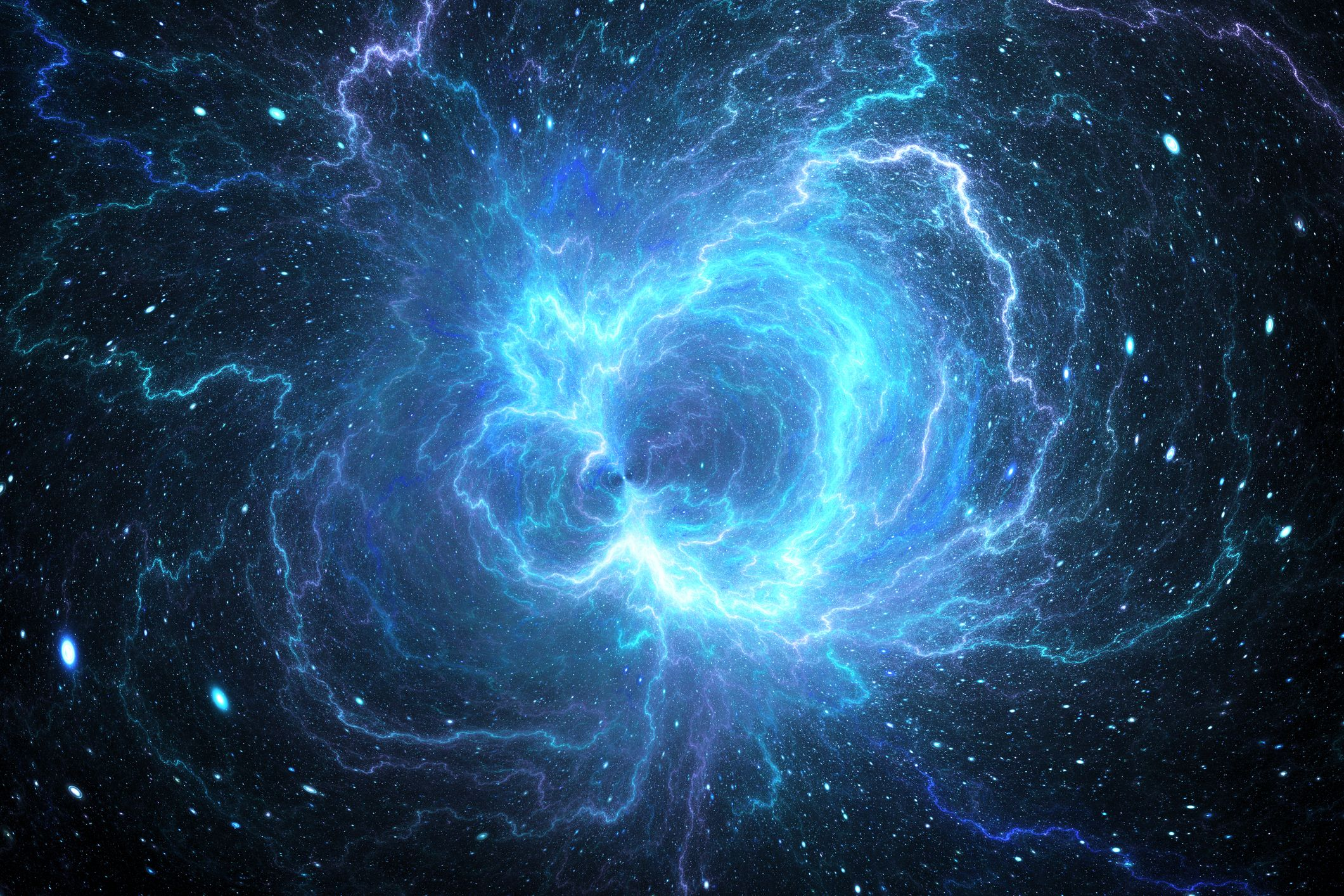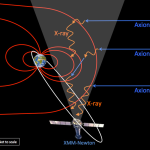Dark energy is a mysterious force that plays a vital role in the universe’s expansion, influencing the fate of galaxies and cosmic structures. As researchers explore its depths, new insights from the Dark Energy Spectroscopic Instrument (DESI) collaboration reveal that this elusive energy, often equated with the cosmological constant, may not be as constant as once believed. Recent findings suggest that dark energy might be weakening over time, which challenges established models understanding universe expansion. Such revelations prompt a reevaluation of our comprehension of matter distribution and its relationship with dark energy, raising important questions about the future of the universe. By utilizing the largest 3D map of cosmic structures, scientists are unraveling the intricate interplay between dark energy and the fabric of space-time.
Exploring the concept of dark energy, often referred to as the enigmatic force behind the universe’s accelerating expansion, unravels critical dynamics in cosmic evolution. Known colloquially as the ‘cosmological constant,’ this phenomenon compels astronomers to reassess traditional views on the universe’s architecture. With the Dark Energy Spectroscopic Instrument (DESI) at the forefront of this research, scientists are delving into the subtle shifts in matter distribution that reveal the changing nature of this force. As we examine these dynamics, we begin to comprehend how dark energy may evolve, impacting not only the present state of the cosmos but also its ultimate destiny. Thus, understanding dark energy is not just an academic exercise but a key to unlocking the mysteries of the universe.
Understanding Dark Energy: The Driving Force Behind Universe Expansion
Dark energy is often described as the mysterious force contributing to the accelerated expansion of the universe. This enigmatic phenomenon is thought to account for approximately 68% of the total energy density of the cosmos, fundamentally influencing cosmic dynamics. The ongoing research, particularly through the Dark Energy Spectroscopic Instrument (DESI), aims to decode its characteristics and determine whether it behaves as a constant over time or if its effects vary, potentially reshaping our understanding of the universe’s future.
The implications of dark energy are profound, as they challenge established cosmological theories, including the cosmological constant originally proposed by Einstein. By utilizing advanced observational data and sophisticated simulations, researchers are beginning to unravel how dark energy interacts with matter in the universe, further complicating the matter distribution we observe today. As scientists like those at the Center for Astrophysics delve deeper into the intricate relationship between dark energy and the universe’s expansion, they are uncovering insights that could redefine fundamental astrophysical principles.
The Role of DESI in Mapping the Cosmos
The Dark Energy Spectroscopic Instrument (DESI) stands as a groundbreaking tool in astrophysical research, tasked with mapping the universe’s large-scale structure. Over the past few years, DESI has collected data from more than 14 million galaxies, contributing to an unprecedented three-dimensional map of the cosmos. This extensive catalog not only allows researchers to examine how dark energy influences cosmic expansion but also enables the study of how matter is distributed throughout the universe.
By analyzing Baryon Acoustic Oscillations (BAO) that arose during the early phases of the universe, scientists utilize these cosmic ‘rulers’ to further gauge the universe’s expansion rate. Such analysis aids in refining our comprehension of dark energy’s role over billions of years, challenging the assumptions surrounding the cosmological constant. The groundbreaking findings from DESI are not just mere observations; they hold the potential to alter the framework of cosmology as we know it, prompting fresh debates about the universe’s fate.
Investigating the Evolution of the Universe
Galaxies and their evolution are critical components in understanding the universe’s vast history. The findings from DESI offer new perspectives on how galaxies developed under the influence of dark energy and matter distribution over time. Such research is essential for constructing a coherent narrative of cosmic evolution, from the Big Bang to the present day. As scientists sift through DESI’s data, they are gaining insights into various phases of galaxy formation and how dark energy played a role in shaping the intergalactic landscape.
The ongoing exploration of the cosmic web, particularly how it manages to intertwine matter and dark energy, deepens our grasp of universe dynamics. By recognizing patterns in galaxy clustering and distribution, researchers can track the influence of dark energy and better understand its shifting nature. As DESI continues its comprehensive survey of the cosmos, it serves as a vital resource for astronomers hoping to elucidate the complex interplay between dark energy, matter, and the universe’s ultimate fate.
Future of the Universe: Insights from Dark Energy Research
The future of the universe hinges on our understanding of dark energy and its interplay with matter. As researchers analyze the latest DESI data, questions about the fate of cosmic expansion arise. Will dark energy continue to dominate the cosmic landscape, leading to an ever-accelerating universe? Or are there variables yet to be discovered that will influence our cosmological model? These inquiries are at the forefront of contemporary astrophysics, reshaping our views on the ultimate destiny of all cosmic entities.
As we edge closer to grasping the nuances of dark energy, the implications extend beyond theoretical constructs. They invite philosophical considerations about existence and the universe’s fiber. While predictions vary—from an eternal expansion to potential cosmic contraction—the data emerging from DESI indicates that dark energy’s properties may not be static. This revelation could pave the way for a transformation in our cosmological narrative, prompting a reassessment of not only how we visualize the future of the universe but also the fundamental laws that govern it.
Collaboration and Innovation at DESI
The success of the Dark Energy Spectroscopic Instrument (DESI) arises from a robust international collaboration of over 900 researchers across more than 70 institutions. This collective effort combines a myriad of expertise, facilitating advancements in our understanding of dark energy and cosmology. Through shared resources, unique methodologies, and open-source data, DESI embodies the synergy of global scientific innovation, fostering an environment where groundbreaking discoveries can flourish.
Moreover, the collaboration emphasizes the importance of public outreach and education. By making their data accessible and engaging, DESI encourages a wider audience to participate in the discourse surrounding cosmic research. The dedication of DESI team members to nurture an informed public showcases the instrumental role of collaboration not just in achieving scientific goals, but also in enriching the community’s understanding of the universe.
Breakthrough Findings on Dark Energy’s Changing Nature
Recent published results from DESI have raised intriguing questions regarding the nature of dark energy. Traditional models maintain that dark energy remains constant; however, analysis shows signs that its influence may be weakening over time. This revelation prompts astrophysicists to consider alternative theories and refine existing models, as we seek deeper understandings of our universe’s expansion dynamics.
By meticulously gathering and analyzing data spanning billions of years, scientists have begun to document subtle shifts in dark energy’s effects. These changes in cosmic behavior emphasize the necessity of revisiting longstanding cosmological assumptions. Continued investigation into dark energy’s evolving characteristics holds the promise not only for uncovering the universe’s past but also for predicting its ultimate progression.
The Importance of Cosmological Constants in Understanding Dark Energy
Cosmological constants play a significant role in cosmology, particularly regarding dark energy. Classically described as a fixed value representing the energy density of empty space, these constants are fundamental to our theoretical understanding of the universe’s structure and dynamics. However, recent findings suggest that our perception of the cosmological constant may be too simplistic, as various measurements indicate that dark energy may not be a constant after all.
Understanding how cosmological constants intertwine with dark energy is pivotal for developing an accurate model of the universe’s behaviors. As researchers analyze the distribution of matter alongside dark energy’s impact, they are formulating a more nuanced view that considers the possibility of fluctuation over time. This exploration of gravitational interactions and energy density is crucial for unraveling the complexities of cosmic expansion.
Adapting Our Understanding of Matter Distribution in Cosmology
Matter distribution is a cornerstone of cosmological research, dictating how galaxies, stars, and other celestial bodies interact. The configurations of galactic clusters and voids hold vital clues about the role of dark energy in cosmic evolution. DESI’s groundbreaking 3D mapping efforts enable researchers to visualize these patterns with accuracy, thereby illustrating how matter and dark energy collectively influence the overall structure of the universe.
Such detailed mapping allows for a greater understanding of not just matter distribution but also its history and relation to dark energy. By analyzing how galactic structures formed over time, scientists can theorize about the effects of dark energy on these distributions. As we gather more insights, we may be able to foresee changes within matter distribution and its implications for the universe’s future trajectory.
Public Engagement Through DESI’s Open Data Initiative
DESI’s commitment to public education and transparency extends to its data release initiative, allowing anyone with interest to explore vast catalogs of cosmic information. By making data widely accessible, DESI strives to enhance public understanding and engagement with astrophysics. This initiative encourages budding scientists, educators, and enthusiasts to delve into the universe’s intricacies, fostering a culture of curiosity and discovery among a broader audience.
Through platforms designed for public interaction, the DESI collaboration not only disseminates knowledge but also inspires the next generation of astronomers and physicists. As citizens engage with this wealth of information, they are empowered to observe patterns in astrophysics, contribute to discussions on dark energy’s effects, and appreciate the complexities inherent in the universe’s evolution. This democratization of information can catalyze innovative ideas and collaborative projects that further advance cosmic research.
Frequently Asked Questions
What is dark energy and how does it relate to universe expansion?
Dark energy is a mysterious force thought to be driving the accelerated expansion of the universe. Its influence is evident as the universe continues to expand at an increasing rate, counteracting the gravitational pull of matter. The findings from the Dark Energy Spectroscopic Instrument (DESI) indicate that dark energy plays a crucial role in shaping the universe’s future.
How does the Dark Energy Spectroscopic Instrument (DESI) analyze dark energy’s impact on the universe?
The Dark Energy Spectroscopic Instrument (DESI) captures the distribution of matter across the universe, enabling researchers to assess dark energy’s effects throughout cosmic history. By mapping over 14 million galaxies and quasars, DESI identifies subtle patterns in matter distribution, which are influenced by dark energy and provide insight into how it may be changing over time.
What is the cosmological constant and how is it related to dark energy?
The cosmological constant is a term introduced by Albert Einstein that represents the energy density of space, which is associated with dark energy. It is often viewed as a constant force that influences space’s expansion. Current research, including findings from DESI, suggests this constant may not be as immutable as once thought, potentially revising our understanding of dark energy.
What future implications does dark energy have for the fate of the universe?
Dark energy is essential in determining the future of the universe due to its role in accelerating cosmic expansion. If dark energy continues to weaken, as indicated by recent DESI findings, it could revise predictions about the ultimate fate of the universe, including scenarios of a slowing expansion or even recollapse.
How does matter distribution relate to our understanding of dark energy?
Matter distribution in the universe is intricately connected to dark energy because the gravitational effects of matter influence its expansion. The Dark Energy Spectroscopic Instrument (DESI) studies these distributions to measure dark energy’s historical and current impacts, revealing how it may vary across cosmic time.
Why is the study of dark energy important in cosmology?
Understanding dark energy is vital in cosmology because it accounts for nearly 70% of the universe’s total energy content. Insights gained from studying dark energy through instruments like DESI can lead to breakthroughs in our comprehension of the universe’s fundamental workings and its ultimate destiny.
What role do Baryon Acoustic Oscillations play in measuring dark energy?
Baryon Acoustic Oscillations (BAO) are regular, periodic fluctuations in the density of visible baryonic matter of the universe. They act as standard rulers for measuring cosmic distances. By analyzing BAO patterns, researchers can evaluate the rate of expansion influenced by dark energy over time, providing insights into its characteristics.
| Key Point | Description |
|---|---|
| Dark Energy Analysis | The Dark Energy Spectroscopic Instrument (DESI) is examining dark energy’s effects on the universe’s expansion. |
| Future of the Universe | Findings from DESI suggest that dark energy may be weakening over time, impacting the fate of the universe. |
| Baryon Acoustic Oscillations | Patterns traced from the early universe help measure and understand dark energy’s strength throughout history. |
| Collaboration and Expertise | The DESI project consists of over 900 researchers globally, contributing various expertise to the study of dark energy and cosmic phenomena. |
| Ongoing Research | The DESI survey will continue to gather data, aiding in the study of galaxy evolution and cosmic structures. |
Summary
Dark energy is a crucial component in understanding the universe, and recent findings from the DESI collaboration raise new questions about its nature and influence. As research suggests that dark energy might be weakening, the foundational cosmological theories may require re-evaluation. This evolving perspective enhances our grasp of cosmic expansion and ultimately informs predictions regarding the universe’s fate.










